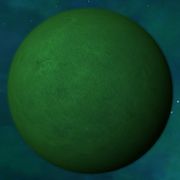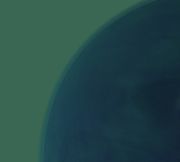Article possibly outdated (v4.86
)This article has not been verified to be up to date for the latest version of the Discovery mod. The last edit was made on 17.12.2012 (
DD/MM/YYYY). You may help by
updating it, often by using the
code generator.
The Omicron-94 system, located beyond the Edge Nebula, is a tertiary star system at the very edge of the Sirius sector. A quiet and relatively safe region of the Corsair Empire, the system was discovered in 756 A.S. by explorers dispatched by Don Quixote of the Benitez Family.
Containing a number of planets and a number of unique stellar formations, the system was extensively explored during the tenure of Don Quixote, with the exception of the Aegian Nebulae, during the exploration of which, the famous explorer disappeared.
Since 786 A.S. the system has been gradually developed, with bases positioned in the system to benefit from it's relative security.
Omicron-94 is part of a loop of systems only accessible from hidden jump holes in the Omicron Gamma system. Over recent years, security measures have been increased in response to reports of potential threats beyond the frontier of Corsair space.
Aside from the Corsairs and their current and former allies and business associates, the only organisation with any detailed knowledge of Omicron-94 are the Bounty Hunters Guild who discovered the system at some point in the late 8th century A.S. but before the Corsairs had begun developing the system. As a result, they have a rough understanding of the natural layout of the system and it's neighbours, not taking into account stellar drift, but no intel on the Corsair installations now established in the system, as further infiltration has been prevented by the potent defence forces posted at system's entrance.
System Overview
|
Astronomical Bodies
Stellar Objects
- White Dwarf Sun
- Medium Green Sun
- Blue Dwarf Sun
- Planet Mykonos
- Naxos
- Amorgos
- YK-087
- Santorini
- West Aegian Nebula
- Andros Field
- North Aegean Nebula
- South Aegean Nebula
|
Industrial Development
|
Faction Presence
Lawful Factions
Corporations & Guilds
Unlawful Factions
|
Jump Gates and Holes
Planetary Bodies
Planet Mykonos
Error creating thumbnail: Unable to save thumbnail to destination - Planet Mykonos is one of the most visible and significant features of the Omicron-94 system. A gas giant, Mykonos has an atmosphere made up almost entirely of oxygen, hydrogen and noble gasses. Unprocessed, gas collected from this planet is toxic due to its high oxygen concentration wreaking havoc on a subject's lungs, but after processing can be used in the artificial atmosphere of space stations and ships. A technique called "Gas scooping" originally developed by the GMG (and stolen) allows Corsair ships to harvest oxygen and hydrogen from the planet, pressurize it, and offload the gasses on nearby bases to supplement their artificial atmospheres. Waste products of maintaining the atmospheres of stations in the system (such as Carbon Dioxide) are released back into Mykonos' atmosphere to ensure a net atom economy is maintained.
- Location: C/5
- Diameter: 25,738 km
- Mass: 11.68 x 10e24 kg
- Terrain: N/A
- Temperature: N/A
- Escape Velocity: 31.45 km/sec
|
Naxos
- A moon of the much larger Mykonos gas giant, Naxos is a small rocky satellite with little economic value. Pot marked by craters from asteroid impacts, the moon has a very thin atmosphere and is primarily used for weapons testing by the Corsair contingent in the system.
- Location: C/5
- Diameter: 2,356 km
- Mass: 2.43 x 10e24 kg
- Terrain: Barren
- Temperature: -48°C to 75°C
- Escape Velocity: 4.45 km/sec
|
Amorgos
- The Amorgos satellite is locked into a slow orbit of the greater Mykonos Gas Giant, but rotates rapidly on its own axis. With a thin Oxygen-argon atmosphere with pockets of dinitrogen monoxide, the air on Amorgos is barely breathable for short periods. Any prospect of colonization was dismissed after the revelation that the moon had little to no natural resources. With severe dust storms throughout the moon's cycle, the closest Amorgos has come to colonization has been a few brief survey missions. Due to dinitrogen monoxide concentration in the atmosphere, many members of these missions returned suffering hallucinations. Claims of alien ruins made are more commonly dismissed as a result of the hallucinogenic effects of the atmosphere. In 803 AS the Council of Elders on Crete formally forbade further survey missions to take place on the moon.
- Location: C/5
- Diameter: 2,631 km
- Mass: 2.91 x 10e24 kg
- Terrain: Barren
- Temperature: -11°C to 35°C
- Escape Velocity: 3.91 km/sec
|
YK-087
- A planet in a desolate area of the Omicron 94 system. As yet, this planet has not been charted, surveyed or explored. No details are available about its exact size, mass or terrain.
- Location: G/4
- Diameter: N/A
- Mass: N/A
- Terrain: Barren
- Temperature: N/A
- Escape Velocity: N/A
|
Santorini
Error creating thumbnail: Unable to save thumbnail to destination - The second largest planet in the system, Santorini is a dark and very dense world with a toxic atmosphere. High concentrations of Sulphur Dioxide and Chlorine in the atmosphere make the air of the planet totally un-breathable. Added to this, convection currents caused by the strong solar radiation falling on the planet lead to large dust clouds primarily composed of carbon particulates that can not only clog lungs but also machinery. With no out-right economic value, Santorini's main significance is it's unique asteroid belt, held in place due to the gravitational pull of the planet's dense core. This belt houses the relatively newly established Thira Colony.
- Location: B/7
- Diameter: 23,645 km
- Mass: 8.01 x 10e24 kg
- Terrain: Volcanic
- Temperature: 42°C to 90°C
- Escape Velocity: 21.45 km/sec
|
Nebula and Asteroids
West Aegian Nebula
Please upload an image of this field. - At some point over the last decade, the Southern Aegian Nebula split, drifting to cover the Omicron 96 jump hole. Guarding the only passage to and from the jumphole is a Benitez family cruiser and gunboat. These two are under the command of the well known Benitez commander Seth Benitez, widely respcted for defending 94 against several nomad invaders in the summer of 815 AS.
|
Andros Field
Please upload an image of this field. - The Andros Field was the first area of Omicron-94 to be discovered by the Corsairs. Extensive surveys confirmed presence of trace iron oxide and aluminium oxide deposits, but not in concentration high enough for extraction to be viable. Currently, Corsair pilots use the Andros Field predominantly for inner-field combat training exercises. Recently, the Andros Field has become particularly important in deterring infiltration of the system by heavy enemy craft.
|
North Aegean Nebula
Please upload an image of this field. - An outcropping of the Edge Nebula, the North Aegean Nebula is largely uncharted. Recon missions by the Corsairs have been largely unsuccessful due to radiation emanating from within the nebula, and navigational hazards caused by the electromagnetic interference within the cloud. Many survey ships dispatched into the nebula have not returned, and out of those that have, at least two have reported encountering hostile entities. Since this report, the Battleship Delos was dispatched to patrol the edge of the nebula, and continued reconnaissance into the nebula was suspended.
|
South Aegean Nebula
Please upload an image of this field. - An outcropping of the Edge Nebula, the South Aegean Nebula is smaller than its cousin in the north, and has less electromagnetic interference within. With little economic or strategic value, the South Aegean Nebula is rarely utilized by the Corsairs, and parts are still unexplored.
|
Space Stations
- Originally deployed in 804 AS, the Delos was among the first Osiris class battleships constructed for the Corsairs. Due for decommission in 814 AS after the Corsairs developed superior battleship designs of their own, the Delos was re-deployed at the last minute when survey teams reported contact with unidentified hostile ships in Omicron-94. Since 814 AS, the Battleship Delos has been deployed at the border of charted space in Omicron-94, patrolling the frontier to ensure the safety of the outposts located in the system.
- Location: D/4
- Class: Osiris
- Crew: CLASSIFIED
- Armament: CLASSIFIED
|
- Deep within the Andros Field, Tinos Outpost was established shortly after the system's discovery by the Corsairs in 786 A.S. Originally intended to act as the watchtower at the furthermost frontier of the Corsair Empire, Tinos Outpost's purpose was adjusted with the construction of Syros and the deployment of the Battleship Delos to Omicron-94, with the Station acting as a relay station for communications between the isolated system and Corsair command on Planet Crete. After discovery of possible hostile forces in the Aegean Nebulae, an experimental satellite monitoring system was put in place, with sensor satellites deployed across the system to give warning of any incursion. With telemetry relayed back from these satellites to Tinos Outpost, the station is able to distribute intelligence from the satellites to all other bases and allied vessels in the system, with whereabouts and tactical data about the perceived threat.
- Location: B/3
- Class: Unknown
- Gravity: Complete
- Docking: Yes
- Amenities: Yes
- Population: 120
|
- Syros was a project undertaken by the Corsair nation in 802 AS, overseen by one of Crete's powerful military families. Originally intended to act primarily as the base of operations for forces in the area, the station was later expanded to include a dry dock. Since the creation of the dry-dock, Syros has been known dubbed a "Shipyard" and has acted as a servicing and repair facility for Osiris, and now Legate class battleships. After the Delos' deployment to Omicron-94, Syros Shipyard was expanded to include a secondary dry-dock, the construction of which is still underway and is estimated to reach completion over the next 12 months. Despite its size and facilities, constructions of new vessels rarely take place at Syros due to the difficulty of transporting raw materials to the region.
- Location: C/5
- Class: Unknown
- Gravity: Partial
- Docking: Yes
- Amenities: Yes
- Population: 300
|
- Within the asteroid belt of Santorini, in orbit of the planet, Thira Colony was established in 810 AS. With precious little raw materials in the system, the planetoid chosen was almost entirely impermeable and thus perfect for a "dig in" outpost. With the increased frequency of attacks on Omicron Gamma and other Corsair establishments in the Edge by their enemies, the Elders of Crete felt it necessary to lay provisions for a tactical retreat to a defensible location if such drastic action was ever called for. Thira was the centerpiece of this plan, which was designed to help house the populous of Crete, out of harms way if the time ever came when Crete was no longer defendable. By current projections, the Thira project has only utilized ten percent of the planetoid's volume so far, and thus has huge potential to be expanded if necessary. Operating at a sustainable five percent capacity, Thira Colony currently only houses around 200 people, but is largely self sufficient. Occasional gas-scoops from nearby planets provide the station with Oxygen and water to sustain it's current populous, and enough food can be produced in experimental hydroponics centers within the planetoid to feed the minimal crew that currently reside there. Renowned as the "quietest place in the Corsair Empire", Thira is intended to act as the last place of refuge if Gamma is ever overthrown. Management of the "Colony" is currently the responsibility of one of the military families of Crete.
- Location: B/7
- Class: Unknown
- Gravity: Partial
- Docking: Yes
- Amenities: Yes
- Population: 230
|








